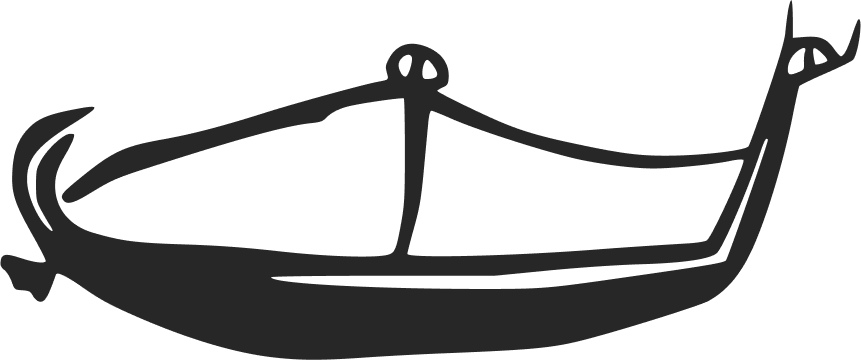Ayia Irini
The island of Kea was part of the so-called Western String providing a pathway between Minoan Crete and the Mycenaean mainland (Davis 2008: 200-201). Together with Thera and Melos, Kea was one of the stepping-stones of trade and communication between the two regions. Located just 30 km from the mainland which is visible on a clear day, Ayia Irini was strategically situated on the last staging post for passage via the Cyclades to the rich polymetallic deposits of Lavrion (lead, copper, silver). Capitalising on its crucial position in the Aegean network of trade and cultural exchange, the center had a clear maritime and commercial orientation focused on silver and textile manufacturing. This is evident from its chosen location that enjoyed an excellent harbour protected from the harsh northern winds, but was otherwise inefficient for exploiting the island’s land resources. The settlement was multicultural from its inception, having been repopulated after a hiatus during the Middle Bronze Age by settlers from different parts of the Aegean including Aegina, central Greece, Cyclades and Crete (Gorogianni 2016).
The Bronze Age town is situated on a peninsula that forms the northern edge of a natural harbour in the bay of Vourkari, itself part of larger Bay of Hagios Nikolaos located at the northwest corner of the island. Depending on the winds, vessels likely beached on either side of the peninsula, with the eastern side best sheltered from the northern wind likely acting as the main harbour (Morgan 2020: 17). The settlement was surrounded by a large fortification wall on at least three sides, suggesting a need for defense while also serving as an expression of ruling power. Buildings at the site were crowded within a tight and heavily fortified perimeter, with an excellent view of the entire bay from the vantage point of its towers. An additional hill sanctuary doubling as a watchtower was located within easy signalling distance, some 500 m to the north west in order to provide further view of the sea outside the bay (Caskey 1967: 476-479). The settlement had a well-designed street layout with paved roads and a sewage system. The main approach to Ayia Irini during the Late Bronze Age was from the northeast, leading directly past the Northeast Bastion, which was the first vantage point from which townspeople could spot visitors. From there, the main Gateway of the citadel opened to a spacious paved road nearly 3 m wide known as Avenue A, with benches along its southern and possibly also its northern side. This road provided passage to a Plateia preceding the largest and richest building of the site (House A) and the adjacent freestanding Temple (Morgan 2020: 24, fig. 1.4).
Northeast Bastion
The Northeast Bastion is a two storeyed structure that was strategically placed within the newly extended fortification wall of the center at the beginning of the Late Bronze Age (early Period VI). Its location was clearly intended to monitor the town’s approach from the sea, especially from its eastern windows which gave view of the marshy land surrounding the bay. The southern windows meanwhile had a direct line of sight of the elite and official gateway to the town which led to the temple (Morgan 2013: 126; 2019: 373). The two relevant frescoed rooms of the upper storey, N18 and N20, are significant for being the largest open space rooms in the entire town of this period, allowing potentially large gatherings. Taken together, this evidence suggests that a special function was envisioned for the building during the expansion of the town’s fortifications (Morgan 2020: 29).
Like the west house of Akrotiri, the ground floor was used as a kitchen and larder meant to service the formal dining spaces on the upper floor that was connected by a service staircase. Fourteen pithoi and a wide variety of pottery suitable for drinking, eating, pouring and storage indicate the building’s use for large feasts (Morgan 2020: 30, n. 80). The rooms of the upper floor are reminiscent of the west house in the privileged view afforded to spectators from within that could observe outside activities from the veranda like windows. Room N18 had a red plastered floor and was decorated with large-scale paintings of plants: grasses and reeds invoking the marshy riverine setting outside, and intertwining bramble of blackberries and myrtle relating to feasting and ceremonial drinking (wine and stew flavourings). Room N20 can be seen as the equivalent of room 5 of the west house, having a similar flagstone and red plaster floor, a separate lavatory, large veranda like windows, and a frieze of miniature frescoes running along the upper side of its walls. The use of flagstones in addition to red painted plaster for the floor of N20 highlights the greater importance of the room with the Miniature freeze, which most likely functioned as a banqueting hall. Its use for large social gatherings of commensal nature is indicated by the large concentration of ceramics used for drinking, eating and food production, as well as the lack of evidence for multifunctional residential industrial use (weaving, metallurgy, pottery production) which is typical for household rooms at the site (Fitzsimons and Gorogianni 2017; Morgan 2020: 35). The architecture, finds and iconography thus all point to the Bastion’s use for banqueting and elite gatherings (Morgan 1995: 243; 1998: 202; 2020: 389-408).
Miniature frieze composition
The miniature freeze occupied the space above the windows and doorways of Room N20. The composition shows “extraordinarily varied images of men meeting, processing, hunting, cooking, navigating, as well as of women, buildings, ships, a chariot, and—most strikingly—a diversity of landscape depicted with intimate understanding of habitats and weather conditions, including multicolored rocks, plants, a long winding marsh, river(s), and unique portrayals of splashing sea and cloudy sky.” (Morgan 2020: 32). The sea provides a unifying thread, running along the bottom of the entire frieze, with each wall having its own theme and setting. According to Morgan, the structuring logic of the frieze was more paratactic than linear, thematically linking opposite instead of adjacent walls: human action north and south, marsh and hunt scenes east and west. The east wall is occupied by a marsh scene showing riverlets of muddy water and riverine plants as the backdrop of a large expanse of sea beneath, while the western wall has fallow deer hunted by dogs in the same marshy setting. The north wall features a town by a river, where the few women depicted are always associated with the urban environment. Lastly, the southern wall shows a coastal landscape with mountainous terrain, buildings, and numerous men in loincloths running along the shores while others are preparing food in tripod cauldrons. Below them in the sea were featured at least three large ships. Other fragments attributed to the same composition show men in long ceremonial robes carrying produce in pots, baskets and other containers, while hunters bring a prey slung on a pole. Yet more male figures seem to be engaged in meetings of ceremonial and gift giving nature, as suggested by their garments and animated hand gestures.
The primary theme of the frieze is the gathering of the community in preparation of a public festival involving a large communal feast, with various stages of the process being depicted while the participants are shown in an agitated state as they bring the meat, carry produce and cook. The centerpiece of the narrative is the scene showing the preparation of food in cauldrons by the coast, with the ships situated immediately beneath, fully decked out in their ceremonial regalia. This same focal point of the composition includes peculiar buildings which have been convincingly interpreted as shipsheds (Morgan 2020: 135-136). Taken as a whole, northeastern bastion fresco compositions show a keen sensitivity towards portraying the natural landscape. A diversity of features is depicted showing intimate familiarity with the local habitats, including rocky multicolored terrain, a long winding marsh, rivers, and plants. The frescoes are also unprecedented for their unique depiction of atmospheric conditions, such as a cloudy sky or the shimmering of the sea water and the depiction of splashing waves. The composition also has strict gender separations, which are clearly delineated through gender codes of color duality, roles and attire. While over 70 men are shown taking active part in the outdoors feast preparations, only six women appear, all restricted to an urban setting detached from the main action.

